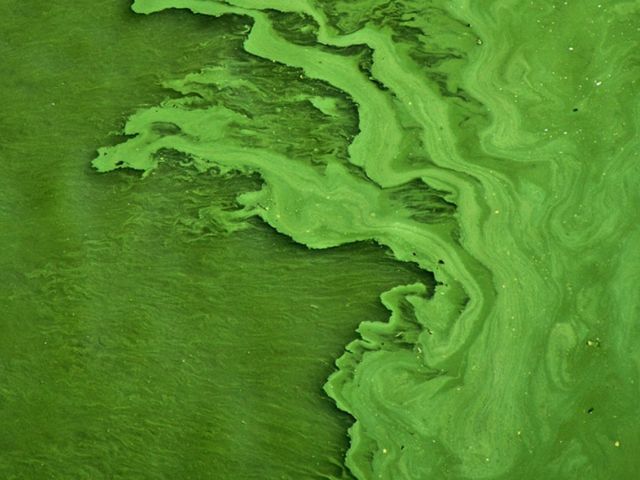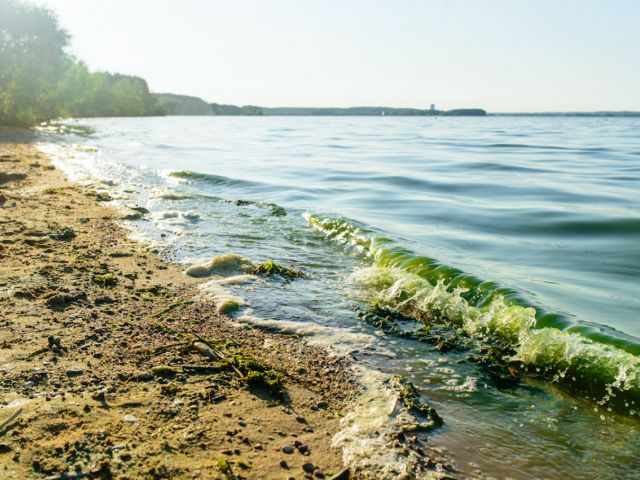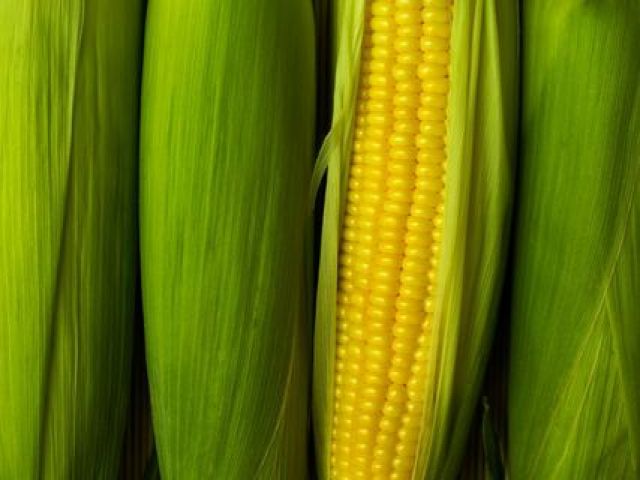Parabens are a group of chemicals widely used as artificial preservatives in cosmetic and body care products since the 1920s. Since cosmetics contain ingredients that can biodegrade, these chemicals are added to prevent and reduce the growth of harmful bacteria and mold, increasing the shelf life of the product.
Displaying 1 - 24 of 3246
Research
California Drinking Water
The array of toxic pollutants in California drinking water could in combination cause more than 15,000 excess cases of cancer, according to a peer-reviewed study by scientists at Environmental Working Group – the first such study to assess the cumulative risk from carcinogenic drinking water contaminants.
Research
Across U.S., Eruptions of Toxic Algae Plague Lakes, Threatening Drinking Water and Recreation
Microcystins are poisonous toxins that can form in blooms of blue-green algae. In recent years, algae blooms – actually microscopic bacteria called cyanobacteria – have erupted in hundreds of lakes nationwide, putting at risk Americans whose drinking water comes from those lakes, or who swim, ski or fish in them. If ingested, microcystins can cause adverse health effects in people and animals
Research
Hidden Carcinogen Taints Tap Water, Consumer Products Nationwide
An industrial solvent classified as a likely carcinogen, which is also a common impurity in cosmetics and household cleaners, was detected in samples of drinking water supplies for nearly 90 million Americans in 45 states, according to testing data from local utilities analyzed by EWG.

Research
EWG's Bottled Water Scorecard, 2011
Pure, clean water. That's what the ads say. But what does the lab say? When you shell out for bottled water, which costs up to 1,900 times more than tap water, you have a right to know what exactly is inside that pricey plastic bottle.

Chemicals and contaminants linked to cancer can be found in food, water and many other everyday products. However, no category of consumer products is subject to less government oversight than cosmetics and other personal care products.
PFAS and Developmental and Reproductive Toxicity: An EWG Fact Sheet
The toxic fluorinated per-and polyfluoroalkyl chemicals known as PFAS are a class of thousands of environmentally persistent synthetic chemicals that have been used since the 1940s. They are added as...

Research
The High Cost of Algae Blooms in U.S. Waters
Communities across the United States have spent more than $1 billion since 2010 dealing with outbreaks of potentially toxic algae in lakes, rivers, bays and drinking water supplies, according to an analysis by the Environmental Working Group.

Research
Case Study: Iowa Cities Struggle to Keep Farm Pollution Out of Tap Water
The Raccoon River in central Iowa runs through one of the most intensely farmed regions of the nation. Agriculture is vital to the area's economy, but polluted runoff from farms poses an acute threat to residents' tap water – and a daunting challenge to utilities struggling to keep the water clean.
Record-Breaking Number of Algae Outbreaks in 2019
A record-breaking number of potentially toxic algae blooms have plagued bodies of water across the country this summer. According to our map, which tracks news stories of algae blooms, as of August 27...

Research
In Minnesota’s Farm Country, Nitrate Pollution of Drinking Water is Getting Worse
Nitrate contamination of drinking water is getting worse in much of rural Minnesota, an Environmental Working Group analysis of state data found.
Algae Outbreaks Up by Nearly One-Fifth in 2019
EWG has found 508 news reports about algae blooms in the country's lakes, ponds and rivers so far this year – 18 percent more than the 429 we found in the same period last year.

Research
Water Treatment Contaminants:
Across the nation, chlorine, added as a disinfectant to kill disease- causing microganisms in dirty source water, is reacting with rotting organic matter like sewage, manure from livestock, dead animals and fallen leaves to form toxic chemicals that are potentially harmful to people.

Research
Better Biofuels Ahead
Biofuels produced from switchgrass and post-harvest corn waste could significantly reduce the emissions that contribute to climate change, according to an analysis by EWG and University of California biofuels experts.

PFAS in Drinking Water: Hazardous at Ever-Lower Levels
Last week, as he unveiled the Environmental Protection Agency's toothless “action plan” on fluorinated chemicals, acting EPA chief Andrew Wheeler maintained that the current guideline of 70 parts per...

Research
Toxic ‘Forever Chemicals’ Detected in Drinking Water Supplies Across California
Drinking water sources for 74 community water systems serving 7.5 million Californians are contaminated with the highly toxic fluorinated chemicals called PFAS, according to an Environmental Working Group review of the latest state data.

Feeding the Waste Cycle: How PFAS ‘Disposal’ Perpetuates Contamination
Current methods of managing waste from toxic “forever chemicals” don't work – and in fact, perpetuate the cycle of contamination, according to peer-reviewed research by scientists from the...

EWG News Roundup (10/25): 2019 National Tap Water Database, Nonstick Chemicals Taint Louisville Drinking Water and More
EWG News Roundup (10/25): Here's some news you can use going into the weekend.

Study: Nitrate in Wisconsin’s Drinking Water Linked to Cancer, Preterm Births and Up To $74 Million in Yearly Healthcare Costs
Nitrate contamination of drinking water in Wisconsin may cause nearly 300 cases a year of colorectal and other cancers and increase the risk of very premature births, very low birth weight and birth...

Research
Ethanol Report 2012
Beware of higher ethanol gas. E-15 fuel could void warranties, damage small engines.

Harmful BPA Replacements Contaminate Store Receipts
“Would you like your receipt?” Maybe not. Your exchange with the grocery store checkout clerk may seem like an odd time to worry about potentially harmful chemicals, but for decades, receipts printed...

Research
Less Farm Pollution, More Clean Water
The federal farm bill is scheduled for reauthorization in 2018. The conservation title of a new farm bill is a remarkable opportunity to jump-start progress toward clean water, clean air and a better quality of life for both rural and urban Americans – but only if we are ambitious and reach for fundamental changes in the title.

Most Corn on the Cob Isn't GMO
The corn shoppers find on supermarket aisles and at farm stands is called “sweet corn” because it contains more sugar than its ancestor, field corn. People eat sweet corn fresh on or off the cob...

Timeline: The FDA’s failure to regulate ‘Brazilian blowout’ hair treatments
For more than a decade, the Food and Drug Administration and the cosmetics industry have known that keratin hair-smoothing treatments – commonly called “Brazilian blowout” treatments – release unsafe...
